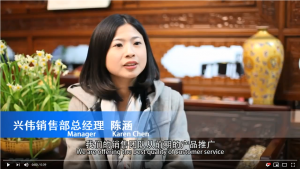The status quo and future development of China’s car reflective film industry
The status quo and future development of China's car reflective film industry The current market situation and competition pattern can be divided into three levels. The status quo of the market 1. The scale of the market The scale of China’s car reflective sheeting industry has increased from 3 billion Yuan from 3 billion yuan in 2013 to 18 billion Yuan in 2018, a year-on-year increase of 500%, with a growth rate of about 50%. Besides, the market share has also increased from 14.5% in 2013 to 45.7% in 2018 according to the <<2024-2030 China Car Body Reflective Film Industry Market Competition Situation and Future Trend Research Report">>released by Market Research Online. That means the vehicle body reflective film industry is constantly developing. 2. The dramatic development of this industry. In recent years, there has been a variety of types of car body reflective sheeting in China. Among these, the industry of body reflective film with characteristics of explosion-proof, sun-resistant, corrosion-resistant, rain-proof, and snow-proof is developing rapidly. And at the same time, it is expanding these years, for instance, the brand-new green reflective film industry, and the reflective film industry based on energy conservation and emission reduction, which brings great opportunities for the development of the car body reflective sheeting industry. 3. The division of the market The industries of reflective film used for cars are mainly distributed in major economic zones, such as East China, South China, and North China, as well as developed cities, like Shanghai, Shenzhen, Guangzhou, and so on. The industries of reflective film used for cars are increasingly developing, which constitutes the main division pattern The competition pattern 1. The market competition The market competition in the reflective film industry utilized for cars in China is dominated by well-known domestic brands, such as Hanben, Keman, Heyin, Aike, and Bisi. These famous brands are in the leading position in the industry, and their market share exceeds 50%. While the newly-published brands have a small market share. However, with the development of the market, the new brands are becoming popular thanks to their revolution in order to attain a bigger market share. 2. Product competition Brands, quality, price, and service are the major components of the product competition in reflective film used for cars in China. And its main content has changed from price competition to quality competition because of the improved technologies in this industry. With the increasing demand for great service, more and more enterprises are enhancing their customer service in order to satisfy the demand from the market. 3. Technology competition With the continuing improvement of technology, the main types of competition have changed from price to technology of reflective sheeting utilized for cars in China. So, the number of entrepreneurs is exploring new materials as well as technology to enhance the quality of the products, which, in another aspect, enhances the market competition. At the same time, the companies have made investments and rolled out new products to meet the demand from [...]
